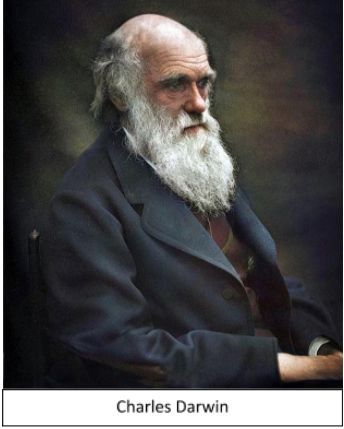
The process of evolution
A. Is a continuous process
B. Is a discontinuous process
C. Was continuous in the beginning but discontinuous now
D. Was discontinuous in the beginning but continuous now
Answer
576.9k+ views
Hint: Evolution from ancestors to modern species requires time and involves intermediate forms. It takes time and is a slow, gradual process without any discontinuity.
Complete answer: Evolution is a stream in the biological studies.
1. It deals with the gradual changes occurring in the heritable characteristics of biological populations over several successive generations.
2. The process of evolution describes how modern organisms emerged from ancient ancestors. According to Charles Darwin, certain variations are better adapted to the environmental conditions of a particular time and in each generation, those adaptations gradually accumulate over a period of time.
3. These adaptations ultimately give rise to new species. Hence, the most important requirement in speciation is time.
4. The intermediate forms between ancestors and present-day modern species i.e. the “missing links” between extinct and extant species strongly support the fact that evolution is a continuous process.

Additional information: Evolutionary biologists have continued to investigate study various aspects of evolution by forming and testing hypotheses as well as forming theories based on evidence from the field or laboratory and on data generated by the methods of mathematical and theoretical biology.
Their discoveries have influenced not just the development of biology but many other scientific and industrial fields, including agriculture, medicine, and computer science, etc.
So, the correct answer is A. Is a continuous process.
Note: The scientific theory of evolution was given by Charles Darwin. According to this, natural selection plays a significant role in evolution. Natural selection also occurs gradually and slowly.
Complete answer: Evolution is a stream in the biological studies.
1. It deals with the gradual changes occurring in the heritable characteristics of biological populations over several successive generations.
2. The process of evolution describes how modern organisms emerged from ancient ancestors. According to Charles Darwin, certain variations are better adapted to the environmental conditions of a particular time and in each generation, those adaptations gradually accumulate over a period of time.
3. These adaptations ultimately give rise to new species. Hence, the most important requirement in speciation is time.
4. The intermediate forms between ancestors and present-day modern species i.e. the “missing links” between extinct and extant species strongly support the fact that evolution is a continuous process.

Additional information: Evolutionary biologists have continued to investigate study various aspects of evolution by forming and testing hypotheses as well as forming theories based on evidence from the field or laboratory and on data generated by the methods of mathematical and theoretical biology.
Their discoveries have influenced not just the development of biology but many other scientific and industrial fields, including agriculture, medicine, and computer science, etc.
So, the correct answer is A. Is a continuous process.
Note: The scientific theory of evolution was given by Charles Darwin. According to this, natural selection plays a significant role in evolution. Natural selection also occurs gradually and slowly.
Recently Updated Pages
A man running at a speed 5 ms is viewed in the side class 12 physics CBSE

The number of solutions in x in 02pi for which sqrt class 12 maths CBSE

State and explain Hardy Weinbergs Principle class 12 biology CBSE

Write any two methods of preparation of phenol Give class 12 chemistry CBSE

Which of the following statements is wrong a Amnion class 12 biology CBSE

Differentiate between action potential and resting class 12 biology CBSE

Trending doubts
What are the major means of transport Explain each class 12 social science CBSE

Which are the Top 10 Largest Countries of the World?

Draw a labelled sketch of the human eye class 12 physics CBSE

Explain sex determination in humans with line diag class 12 biology CBSE

Explain sex determination in humans with the help of class 12 biology CBSE

Differentiate between homogeneous and heterogeneous class 12 chemistry CBSE




